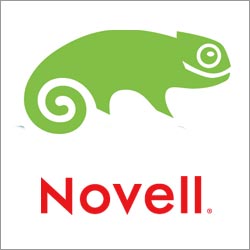Not all IBM Linux can be put in a red hat, SUSE


The two companies announced today that IBM is delivering a portfolio of "software appliances" under a variety of IBM brands, powered by Novell's SUSE Linux Enterprise Server.
A software appliance is a quickly-deployed software stack which uses just those elements of the operating system needed for its own operation.
"They come to the customer ready to roll. In the case of IBM and Lotus Foundations, that solution can be up and running in 30 minutes," said Josh Dorfman, director of alliance marketing for Novell.
Since launching its software appliance business two years ago, Novell has gotten 70,000 registered users, close to 5,000 independent software vendors, and built about 312,000 appliances using SUSE Studio Online, Dorfman said.
"You can use x86 and whatever the application requires. You can boot some of this stuff right off a USB stick. Lotus Foundations is in a flash memory drive. You don't need the whole OS. You only need what your application needs. This provides customers what they need and not more than that."
The result is a lower-cost deployment for the software vendor, a lower price for the customer, and relevance for Novell, which is helping build effective vertical market channels.
"There's also a multiplier effect," Dorfman said. Black Diamond Software, for instance, is building its Presto software appliance using IBM Rational Software with SUSE Linux. The relationship is profitable all around.
Software vendors can build appliances on new equipment, on used equipment, or onto USB sticks, for installation at a customer site, Dorfman said. "This is quick to value, in that you can get to value in 30 minutes.
"We've been recognized for our leadership in the market. We feel like we're leading."